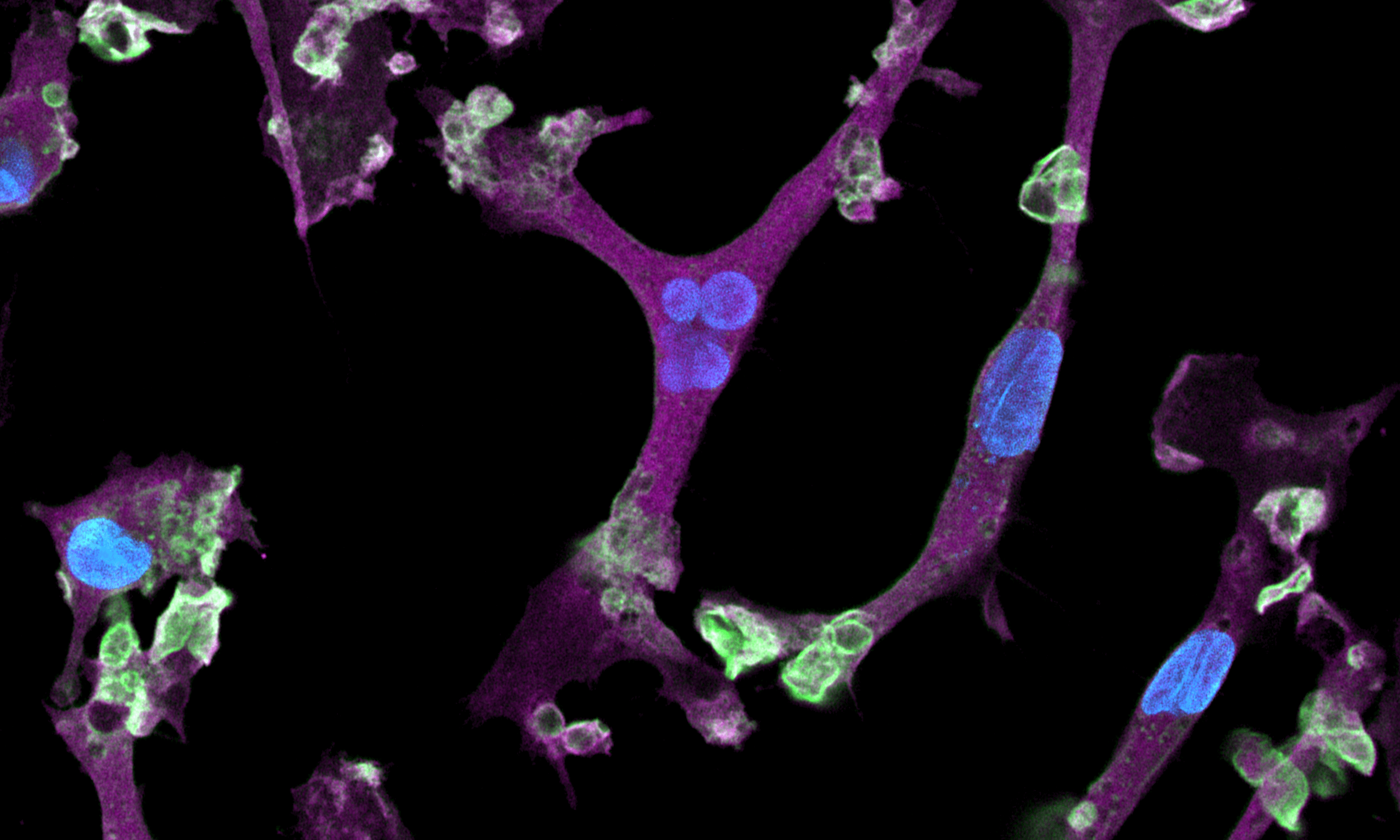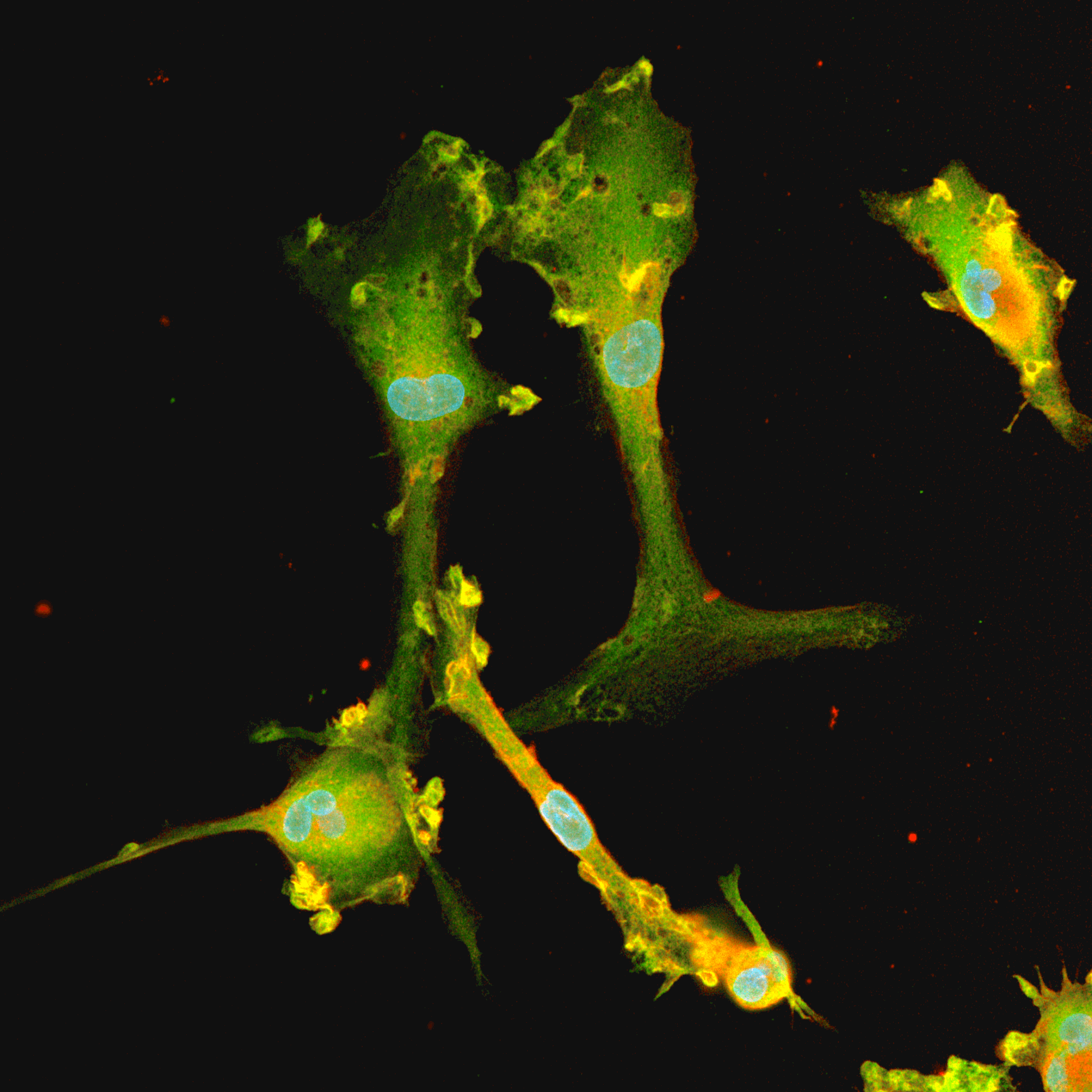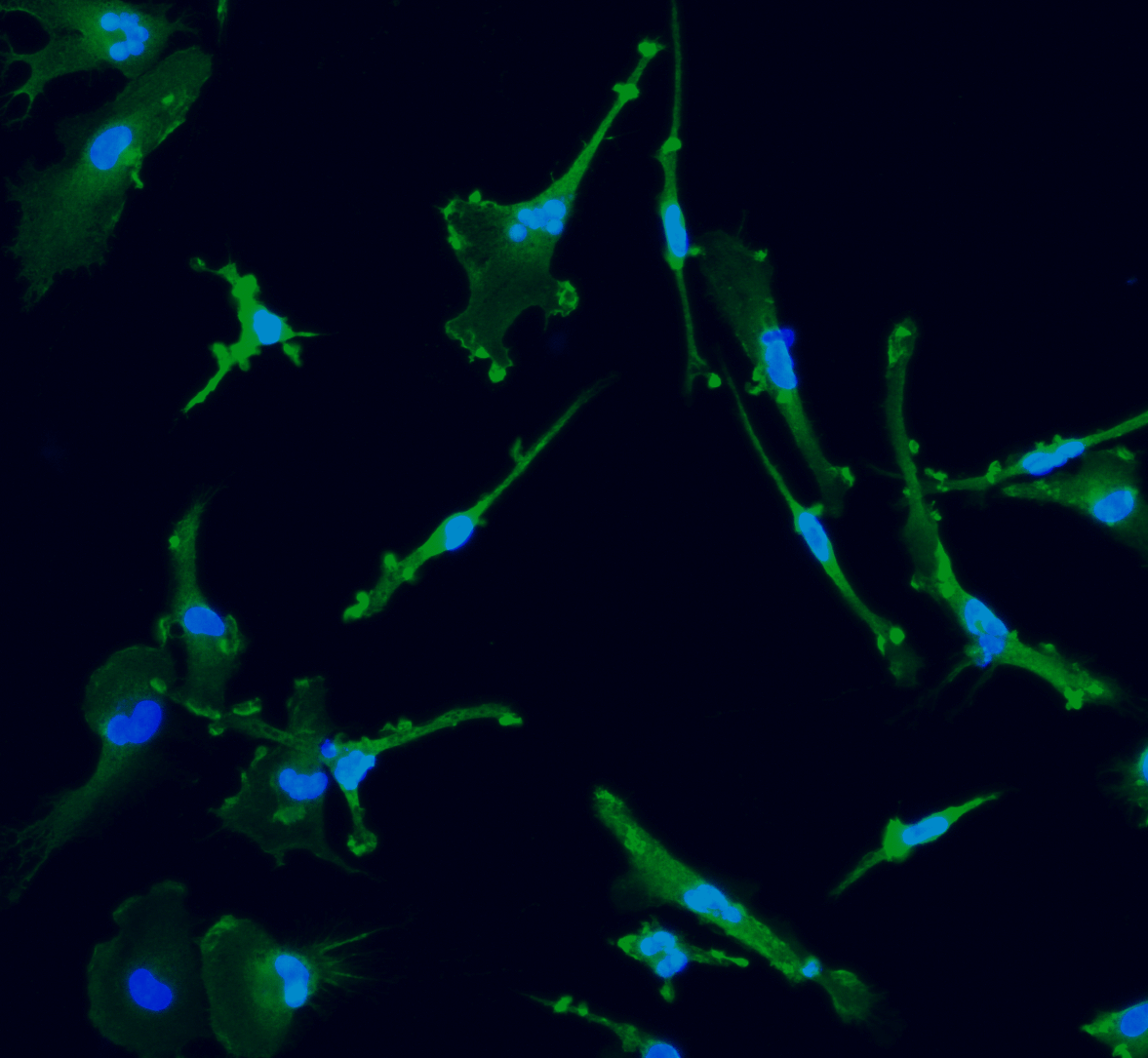ioMicroglia | Stimulation for cytokine release
ioMicroglia | Stimulation for cytokine release
Protocol overview

Introduction
Microglia, as residents of the central nervous system, thrive in a complex and heterogeneous environment that is populated with neurons and glial cells. In their capacity as brain-resident immune cells, microglia play a critical role in responding to tissue damage and infection through the release of cytokines and phagocytosis of pathogens.
There is a need for functional and consistent human microglia for neuroimmune research and drug development for neurodegenerative diseases. Current models have constraints such as limitations in supply, complex protocols, or lot variability. All which raise challenges for drug discovery due to the generation of unreliable data and long experimental timelines.
ioMicroglia are human induced pluripotent stem cell (iPSC)-derived microglia, precision reprogrammed using opti-ox technology. At 10 days post-revival, they demonstrate maturity reminiscent of primary adult and foetal microglia. Functionally, ioMicroglia secrete proinflammatory and antiinflammatory cytokines (IL-6, TNFα, IL-1b, IL-12p70, IL-8, and IL-10) in response to stimuli such as Lipopolysaccharides (LPS) and Interferon Gamma (IFNγ). The protocol depicted below outlines general guidelines for stimulating cytokine release.

Materials and equipment
-
ioMicroglia cells (cat no io1021) cultured to day 10 in a 96-well plate seeded at 37,000 cells/cm2 (200 µL/well)
-
comp:MM2x medium – as described in the ioMicroglia user manual
-
comp:MM2x+LPS+IFNγ medium – as described in Appendix 1
-
96-well U bottom plates
-
Adhesive film
-
LPS (50 µg/mL)
-
IFNγ (50 µg/mL)
-
Biological safety cabinet
-
Standard tissue culture wares (pipettes, tips, culture plates)
-
Normoxic cell culture incubator (37°C, 5% CO2)
-
Vortex
Protocol
The protocol is divided into two sections
1: Treatment of cells with LPS and IFNγ
2: Harvesting of cell supernatants for cytokine readout
1. Treatment of cells with LPS and IFNγ
1.1. Culture the ioMicroglia to day 10 in a 96-well plate seeded at 37,000 cells/cm2 following the ioMicroglia user manual, and transfer them to a biological safety cabinet.
1.2. Add comp:MM2x+LPS+IFNγ medium and comp:MM2x medium to separate reagent reservoirs.
1.3. Remove 100 µL of expended culture medium from each well.
1.4. Add 100µL of the comp:MM2x+LPS+IFNγ medium to the treatment wells, for a final volume of 200 µL.
1.5. Add 100 µL of fresh, pre-warmed comp:MM2x medium to the control wells.
1.6. Incubate plates for 24 hours in an incubator at 37°C, 5% CO2.
2. Harvesting of cell supernatants for cytokine readout
2.1. After the 24 hour incubation, remove plates from the incubator and transfer them to a biological safety cabinet.
2.2. Gently transfer 100 µL of the medium from the culture plates to a fresh 96-well U bottom plate.
2.3. Cover with adhesive film and transfer to the -20°C freezer until ready to analyse on an Meso Scale Discovery (MSD) or ELISA based assay system.
Note: bit.bio uses an MSD system and examines the following cytokines: IL-6, TNFα, IL-1b, IL-12p70, IL-8, and IL-10.
Optional: The attached cells may be fixed for analysis via immunofluorescent staining at a later date.
Appendix 1
Preparation of comp:MM2x+LPS+IFNγ medium
1. Dilute 10µL LPS stock (50 µg/mL) in 90 µL of comp:MM2x medium.
2. Dilute 10µL IFNγ stock (50 µg/mL) in 90 µL of comp:MM2x medium.
3. Use the diluted reagents to prepare comp:MM2x+LPS+IFNγ medium as indicated in Table 1 (make 100 µL per test well plus an excess ~10% for volume loss).
4. Vortex the comp:MM2x+LPS+IFNγ medium for 5 seconds.
Table 1: Preparation of comp:MM2x+LPS+IFNγ medium
|
Reagent |
Stock concentration | Final concentration | comp:MM2x+LPS+IFNγ (for 1000 µL) |
|
comp:MM2x medium |
- |
- |
976 µL |
|
Diluted LPS |
5 µg/mL |
100 ng/mL |
20 µL |
|
Diluted IFNγ |
5 µg/mL |
20 ng/mL |
4 µL |
Technical support
If you have any questions or need assistance, please reach out to technical@bit.bio and we will do our best to support you.
Published August 2023, version 4



